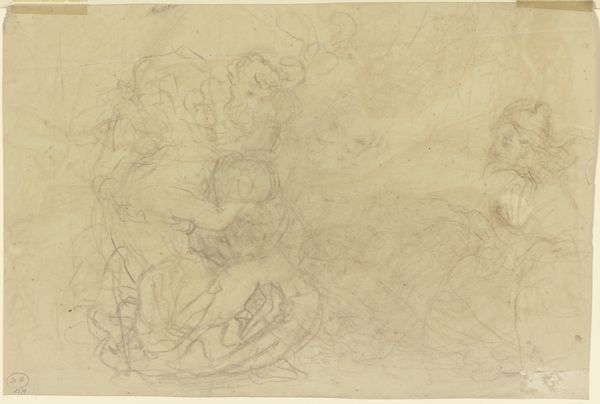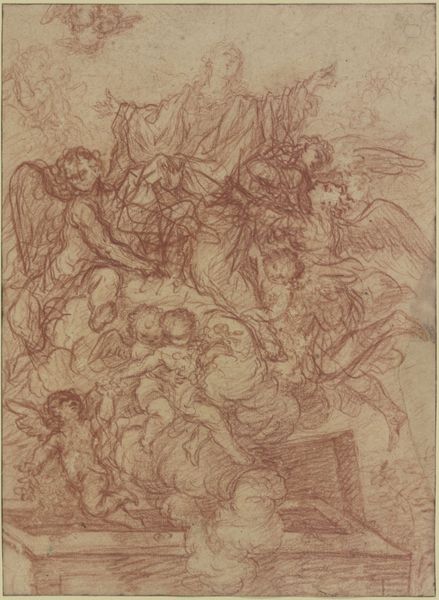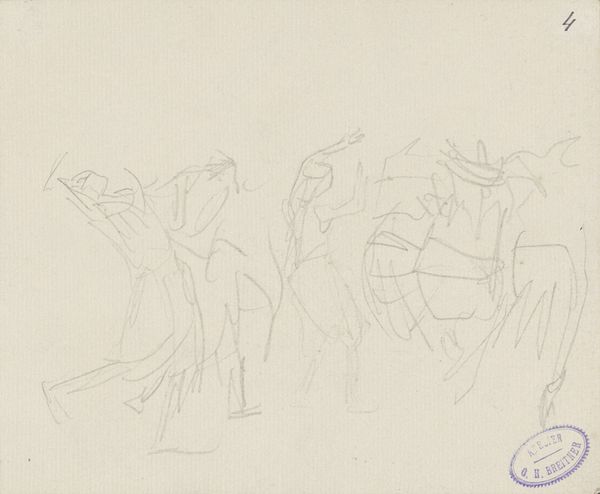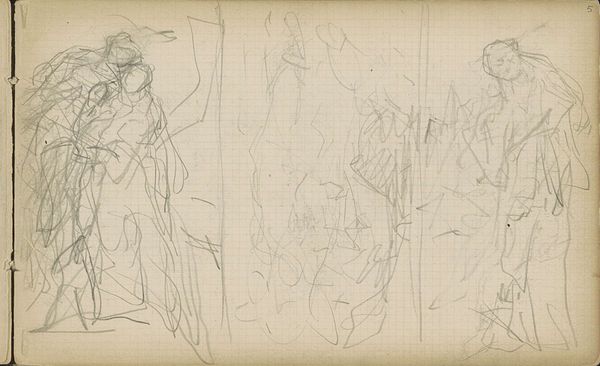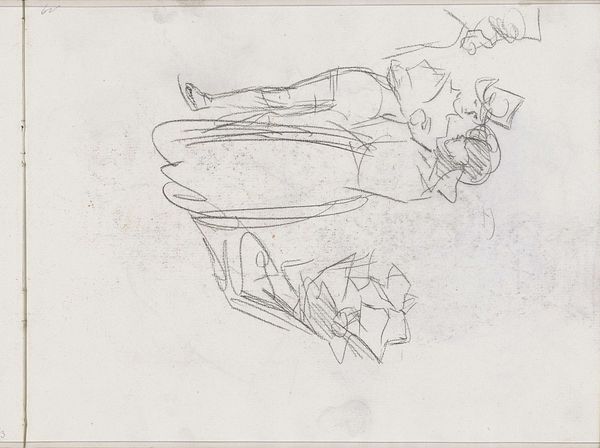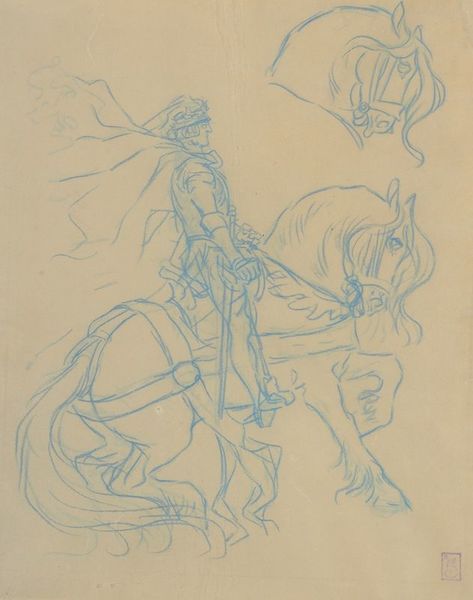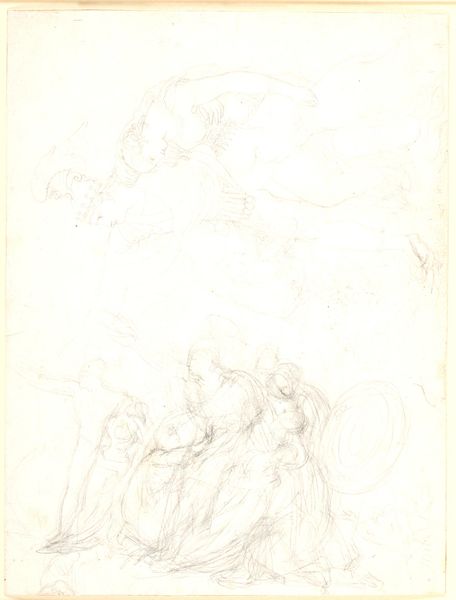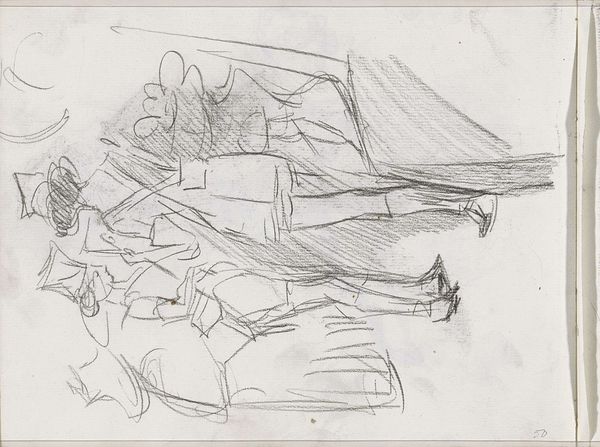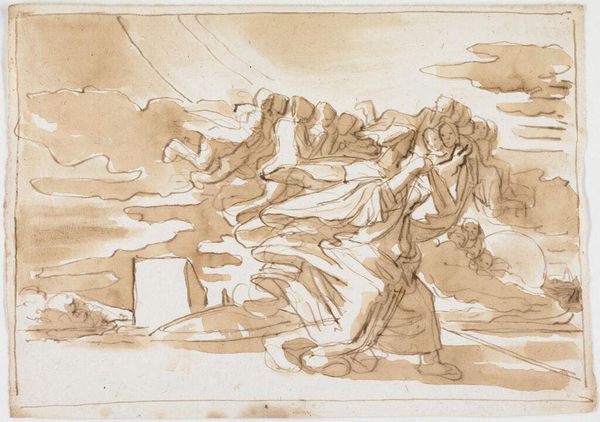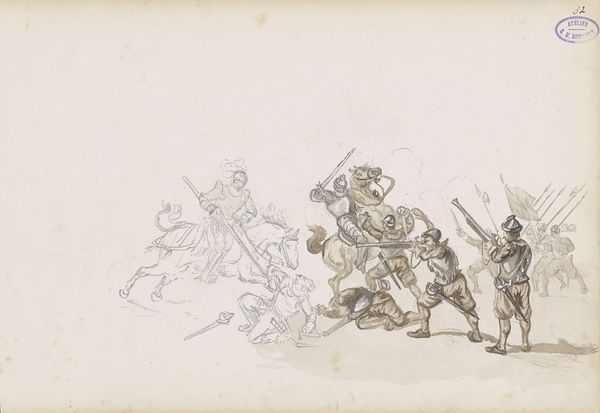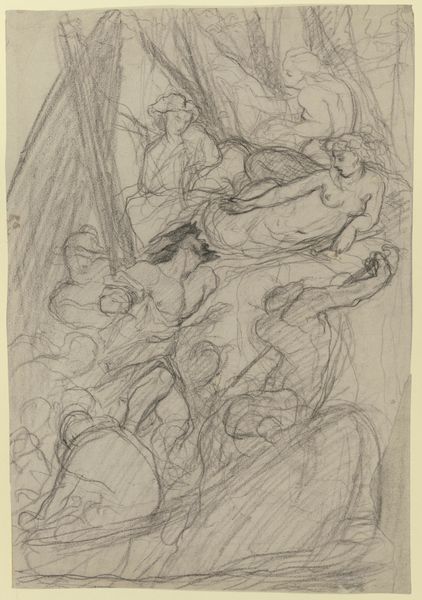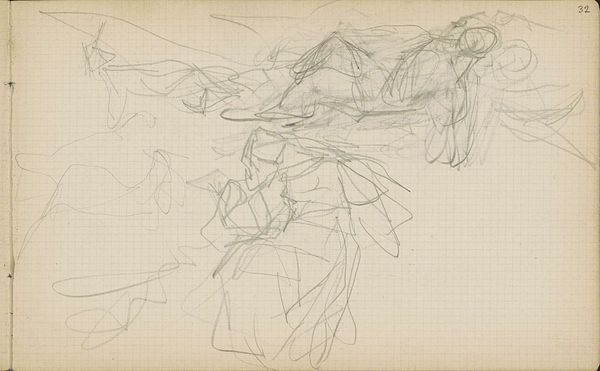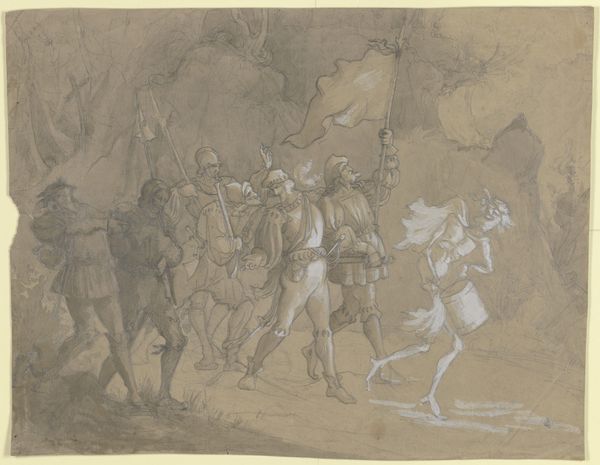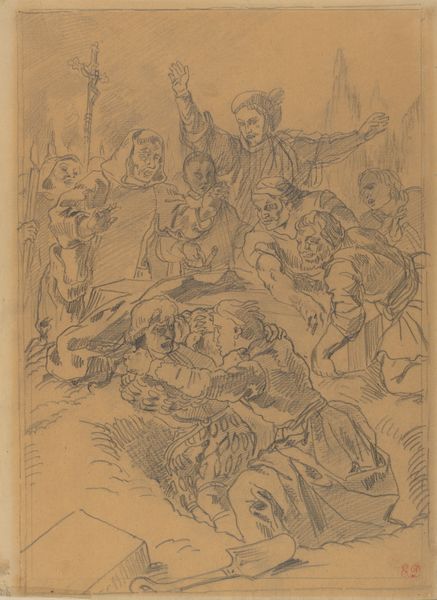
Ritter in einer Schlacht (_), eine von links heranstürzende, lorbeerbekränzte Frau reicht ihm ein (totes_) Kleinkind an
0:00
0:00
drawing, paper, ink, chalk
#
drawing
#
ink drawing
#
narrative-art
#
landscape
#
figuration
#
paper
#
ink
#
romanticism
#
chalk
#
history-painting
Copyright: Public Domain
Editor: This compelling drawing, "Knight in a Battle," rendered in ink and chalk on paper by Victor Müller, depicts a chaotic scene. A woman offers the knight what appears to be a dead child! It’s incredibly unsettling. What's your read on it? Curator: This piece reflects a broader cultural obsession with heroism and tragedy prevalent in 19th-century Romanticism. Think about the socio-political climate: growing nationalism intertwined with anxieties about war and loss. The idealized, yet vulnerable knight embodies those tensions. How do you see the presentation of the woman impacting our interpretation? Editor: Well, her being laurel-wreathed, almost like a Fury from mythology, suggests that war isn’t glorious – it's devastating. The dead child becomes a potent symbol of that cost. Is the museum context itself shaping my view too much? Curator: Museums absolutely frame how we understand art. In this case, placing it within a collection of Romantic-era drawings emphasizes its engagement with historical narratives and emotional intensity, arguably valorising themes of national sacrifice, or pointing to its futility, doesn’t it? How do you perceive its relevance today? Editor: Now that I think of it, that tragic narrative of endless conflicts and loss continues even now. Curator: Precisely. And Müller's choice of medium—drawing—lends an immediacy and vulnerability to a grand historical theme. It's less about celebrating victory and more about contemplating its human cost, something art can bring to the forefront. Editor: It's like the artist anticipated the enduring political impact it can bring by sharing the human tragedy of it all. It will be a moment before I forget about this dark image. Curator: And that is exactly what allows such pieces to continue contributing to societal discussions across centuries. Art makes you feel before it makes you think, hopefully urging some form of progress as we reflect on its history.
Comments
No comments
Be the first to comment and join the conversation on the ultimate creative platform.
